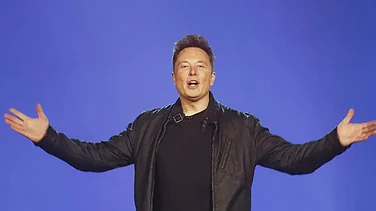India is the world’s fifth-largest automobile market. It manufactured about 26.36 million vehicles across passenger, commercial, three-wheeler, two-wheeler, and quadricycle segments in FY2020, of which 4.77 million units were exported and 21.55 million were sold domestically. The country is expected to become the third-largest automotive market by 2026, riding on increasing local demand and intensifying global exports.
As a result, global manufacturers are eyeing the country, both as a manufacturing hub and market. UK-based electric mobility company London Electric Vehicle Company (LEVC) recently announced its plans to enter the Indian market. In 2019, Škoda Auto Volkswagen India has announced an invest around INR 8,000 crore to ramp up its India operations.
Advertisement
Maharashtra seems to be leading this new chapter of the Great Indian Automobile story. Apart from commanding the highest share of pan-India automobile sales, the state is also home to the manufacturing and assembly operations of brands such as Audi, Volkswagen, Škoda, General Motors, Land Rover, Fiat, Mercedes Benz, Force Motors, Mahindra and Mahinda, and Jaguar. Last year, Bajaj Auto announced its intentions to set up an INR 650 crore production unit in Chakan for high-end motorcycles such as KTM, Triumph, and Husqvarna, as well as to drive the production of EVs. Recently, London-based Causis E-Mobility signed a Memorandum of Understanding (MoU) with the Maharashtra government to set up an EV production plant in Talegaon, Maharashtra.
Advertisement
The factors that make Maharashtra an attractive proposition for automobile manufacturers
As home to the Western Cluster, Maharashtra has a 33% share in the Indian manufacturing space. Pune alone has more than 4,000 manufacturing and ancillary units while Chakan, Nashik, and Aurangabad also have a significant number of manufacturing and assembly units. These regional hubs are extremely well connected and are part of a robust local supply chain that is essential for automotive manufacturers.
Then there is the regulatory focus. In FY2020-21, Maharashtra drove 28% of India’s overall FDI inflows owing to its investor-friendly policies, matchless national and international connectivity, and a strong focus on infrastructure. Last year, Maharashtra launched its Maha Parwana plan that extends a single-window clearance coupled with several incentives to business investments worth more than INR 50 crore in the state. It further introduced its ‘Plug-&-Play Infrastructure’ scheme to provide investors with the desired peace of mind while investing in the western state. Some of the key features of the scheme include quick approval of investment proposals, earmarking of more than 40,000 acres of landbank, flexible pricing and rentals, automatic clearances within 48 hours, and dedicated labor protection guidance.
Understanding the role of infrastructure in commercial operations, Maharashtra has also earmarked 5.2% of its annual budget in 2021-22 for the construction of roads and bridges, higher than the corresponding national average of 4.3%. Out of this figure, INR 6,695 crore will be used for improving transportation efficiencies via bridges and underpasses across the Mumbai-Pune Expressway, one of the busiest roads in the country. A corpus of INR 7,000 crore has been reserved for the Nanded-Jalna Expressway Connector to improve connectivity between Nanded, Hingoli, Parbhani, and Jalna districts. INR 26,000 crore will fund the Pune Ring Road that covers a stretch of 170 kilometers and will decongest the roads of Pune and Pimpri-Chinchwad for smoother transport and logistics operations.
Advertisement
Another advantage that the state offers to its automobile players comes in the form of labor. Maharashtra has a large pool of skilled, semi-skilled, and unskilled workers. The state also has three major automobile-focused institutes in Pune including Automotive Research Institute of India, Auto Cluster Development and Research Institute, and Horiba India Technical Centre. These institutions have mandates ranging from R&D, testing, and certification to the development of MSMEs for OEMs, emission measurement systems, and advanced analytical instruments. On top of it, several initiatives such as Pramod Mahajan Kaushalya and Uddyojakta Vikas Abhiyan (PMKUVA) drive skill-based training programs through Industrial Training Institutes (ITIs) and vocational training organizations. The objective is to ensure that an adequate reserve of skilled workers is available in the state for its current and forthcoming needs.
Advertisement
Maharashtra also has the highest number of ports in India as it houses 53 major and minor seaports along its coastal line, including Nhava Sheva (the largest Indian container port) and Mumbai Port (the largest seaport of India). The state further offers a remarkable export advantage to its industrial players. It is well-connected to key global markets such as the Gulf, Africa, and Europe owing to its proximity to the Suez Canal. So, it barely comes as a surprise that Maharashtra’s exports stood at USD 58.41 billion in FY2021. Had it been a nation, it would have held the 48th rank in terms of exports right behind Finland.
Advertisement
Taking its automobile game, a notch above in the modern backdrop of growing environmental concerns, Maharashtra was also one of the first few states to launch its own EV Policy in 2018. The policy has further been revised in 2021 with an aim to convert 10% of its automobile inventory to EVs by 2025. Another key takeaway of the policy is to attract investments worth INR 25,000 crore and generate more than 1 lakh new employment. It further lays special focus on creating a robust public and private charging infrastructure with several incentives for the entire charging ecosystem.
The current shifts in the global automotive landscape presents a golden opportunity for ambitious automotive brands. Maharashtra emerges as a natural choice for them as an investment destination given its focus on infrastructure development, forward-looking vision, and receptive policy environment. To be a part of this revolution, all one needs to do is embrace this ‘New India’ destination – Maharashtra.















 Just one email a week
Just one email a week